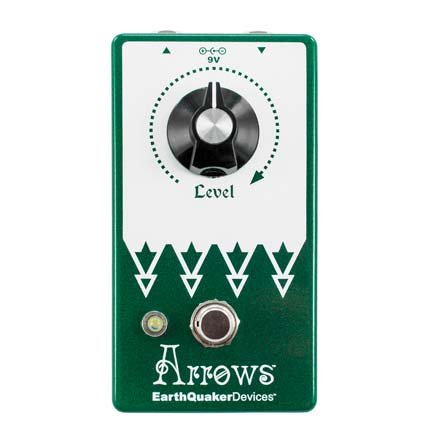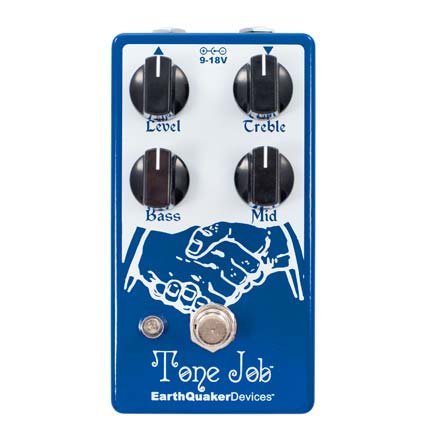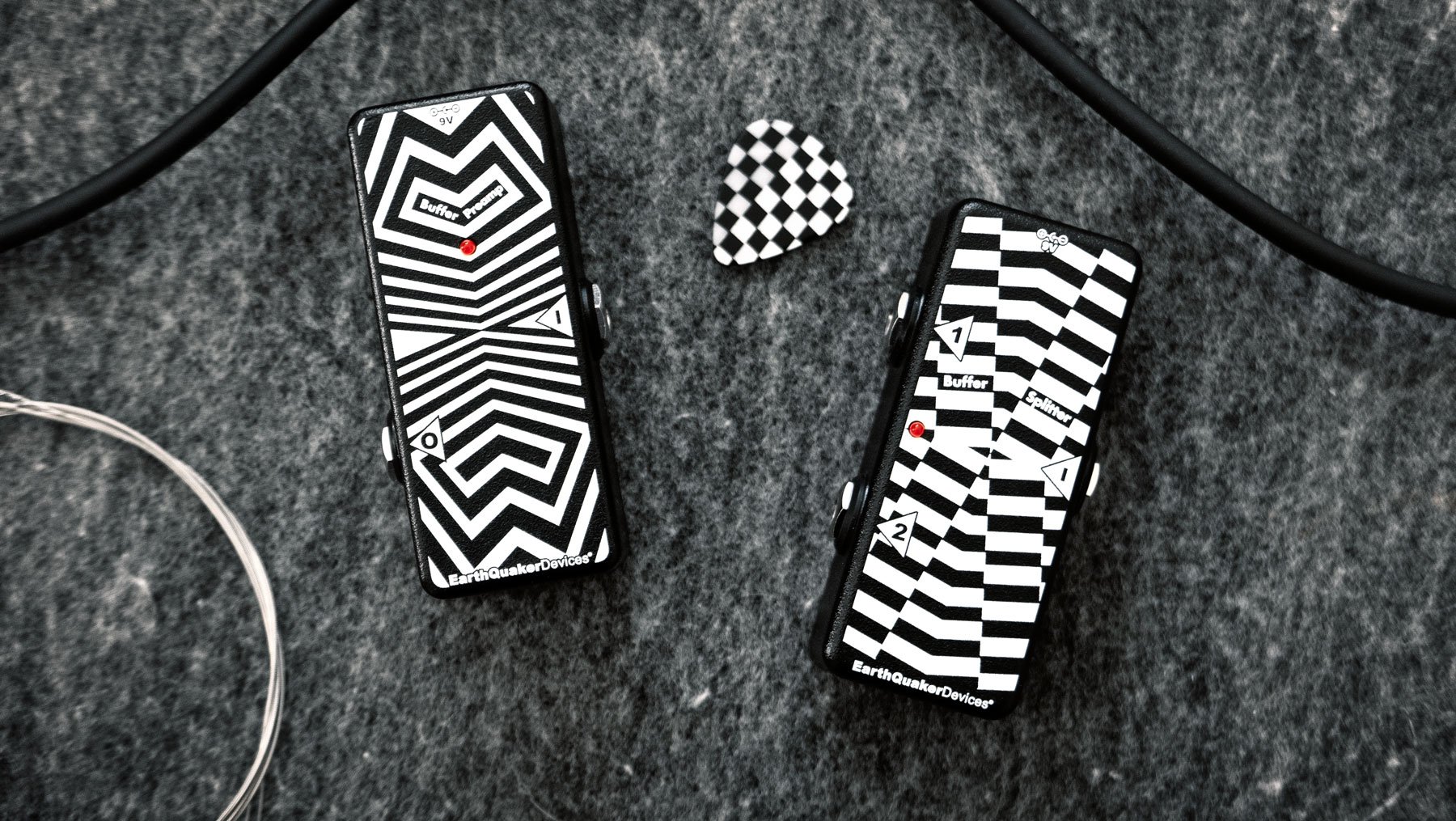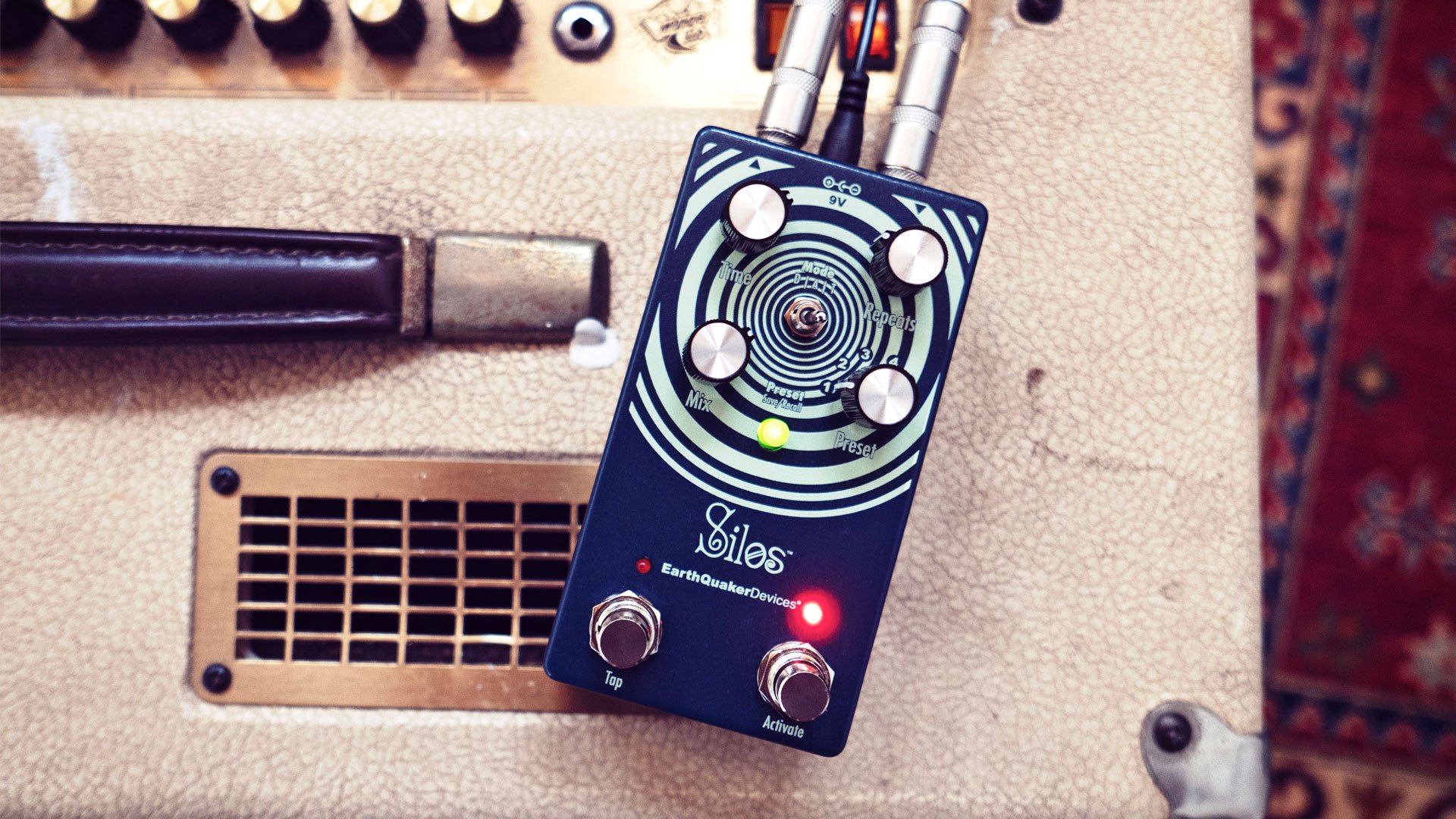EQ & Boost
Malcolm X Abram
Hello Pedal People! It's your friendly pedal mavens at EarthQuaker Devices, and we're back with another detailed look at a category of our pedals. This time we're checking out the Boost, Preamp, and EQ pedals, of which we have two: the Arrows preamp booster and the Tone Job EQ and boost.
For some folks, boosts and EQs are not the most exciting effects category. Plus, your amplifier has tone controls, and half of the pedals on your pedal board or table likely have some tone-shaping knobs, so why spend precious space on an EQ? Well, for touring players who perform in various venues, studios, and stages, having a good EQ or boost can ensure that your tone is always your tone and help you cut through or properly sit in the mix in any given situation.
Neither boosts nor EQ are very complicated concepts. A clean boost raises the volume of your signal and can help push your amp, especially tube amps, into breakup territory or give your fuzz, distortion, and overdrive pedals an extra ... umm ... boost when placed before them in your signal chain. Some boosts pedals focus on a specific frequency range, such as the classic and much imitated one knob Rangemaster Treble Booster favored by Black Sabbath's Tony Iommi early in his career.
While clean boost pedals tend to be pretty straightforward, EQ pedals can range from simple analog circuits and controls to super fancy digital EQs packed with 5-12 band sliders or knobs. Add some high and low pass filters and even Midi programmable EQs, and you can get surgical tone shaping.
Since these pedals are relatively subtle compared to a flanger or a signal mangling device like the Data Corrupter, the sound samples may not immediately blow your ear's socks off. But if you perform with a powerful drummer or share the stage with many instruments playing simultaneously (horns!), a good boost and EQ can make a big difference in getting heard by your legions of fans.
MEET THE PEDALS
Arrows Pre-Amp Booster
As its name suggests, the Arrows is an all-discrete (that means no integrated circuits (a.k.a ICs) pre-amp booster. It features one big-ass knob that boosts your mid-range and cleans and tightens the low end a bit, which is excellent for bass and leads and middle-of-the-keyboard synths lines and chords. If you are not playing in a high gain situation and want to keep your tone, kick on the Arrows to get a healthy nudge for your amp or overdrive pedal and get yourself heard.
Tone Job EQ & Boost
Nothing fancy here either. The Tone Job pedal does the job on your tone with EQ and significant boost options. It's got the three most familiar tone-shaping controls, Treble, Mid, and Bass, giving you about 20dbs of boosting or cutting power with which to play. There's also the Level control which can kick your volume up several notches to about five times the original signal input level. The Tone Job can run at the traditional 9 volts, but you can pump it up to 18v for more clean headroom, depending on your rig. For all the hardcore frequency hounds, go to the Tone Job product page to look at the pedal's specific frequency responses.
METHOD OF OUR MADNESS
We're not fancy folks here at the Upstairs Bedroom Sound Labs. For this demo, we're using the neck pickup of a Partscaster with Tone Rider p90s into an AMT V1 digital preamp modeled on a Vox AC30. The signal then goes through the pedals, into the Bassman 4X10 preset on the Mooer Radar Speaker Cab Simulator, then into a Focusrite Scarlett 4i4, and finally our DAW, Presonus Studio One 5.
SOUND OFF
Arrows
First up is the Arrows. We're going to start out with a relatively clean little progression, kick on the Arrows at around 9 o'clock to match the signal level, and then slowly crank it clockwise to full power! You'll notice that in our all-digital scenario, the Arrows doesn't push the signal too hard. But when on, you can immediately hear the pedal tightening the bottom end and pushing the mid frequencies on the hot-ish Tone Rider P90s.
Now let's add a little dirt, shall we? We'll use the Special Cranker's silicon mode with the Level (volume), and More (OD level) controls set at noon and the Tone Control at 3 o'clock for some added highs. We'll start with just the Special Cranker, kick on the Arrows, set at about 9 o'clock, and then slowly turn it to full so you can hear how it adds saturation to the tone and pushes the light overdrive into heavier territory.
OK, now let's try it with some Fuzz. We have the Arrows in front of the Hoof with the Tone, Level, and Shift controls at noon and Fuzz at 9 o'clock. We've got the Arrows fully cranked to the maximum for maximum effect. We'll start with it off and alternate every four bars while you enjoy this fantastic riff. Notice how the Arrows doesn't change the overall volume much but tightens up that bottom end.
Next up, we'll liven up a flabby dull bass tone. We'll begin with the Arrows off and kick it in after a few bars. The mids get pushed, and that flabby sound from the "vintage" strings winds up with a nice sharp edge for rockin' and/or rollin'.
Tone Job
So here we go with the Tone Job. Remember, it's not a fuzz or a chorus pedal, so don't expect to be wowed by some crazy sounds. But if you're a tone hound, you'll be able to hear what the EQ knobs can do for you. We'll give you a few jaunty chords and take you on a trip around the EQ knobs. We'll start with all the controls at noon and then go from fully clockwise to fully counterclockwise in the following order: Treble, Mid, Bass. You'll likely notice the Mid knob has the most dramatic effect and can easily push your signal into clipping territory.
Now let's add a little dirt from our friend, the Special Cranker. We're on the Silicon side with the More and Level knobs at about 1 o'clock and the Tone at noon. We're using the same loop from the Arrows, and we'll go around three times so you can hear each knob's effect. We're going to start with the Tone Job off, kick it on with the Level at 9 o'clock and take the same Treble, Mid, and Bass trip around the Tone Job's knobs. Notice how the cranking of the Mids knob pushes that good grit sound to the forefront.
Pretty cool, eh? Now let's take that previous bass line and see what the Tone Job's knobs can individually do to it. We'll let the loop play twice and take the same trip, with Treble and Mids during the first loop and all Bass for the second. Of course, you'll likely need all the knobs to get your singular, stellar bass tone, but you can hear how and which frequencies are affected by each EQ knob.
Lastly, we'll give you a taste of how the Tone Job can work on your drums. These sampled acoustic drums are courtesy of Native Instruments Abbey Road 70s, so these are pretty darn close to how it might sound with live drums.
There you have it! The EarthQuaker Devices tone sculpting pedals can help you sound your best and get the exact tone you want from your instrument.
Thanks, see ya next time!
Malcolm X Abram is a recovering reporter and music writer and a proud 40 year guitar noodler. He lives, works and plays in the bucolic dreamland of Akron, Ohio in an old house with two dogs who don’t really like each other and way too many spiders.









